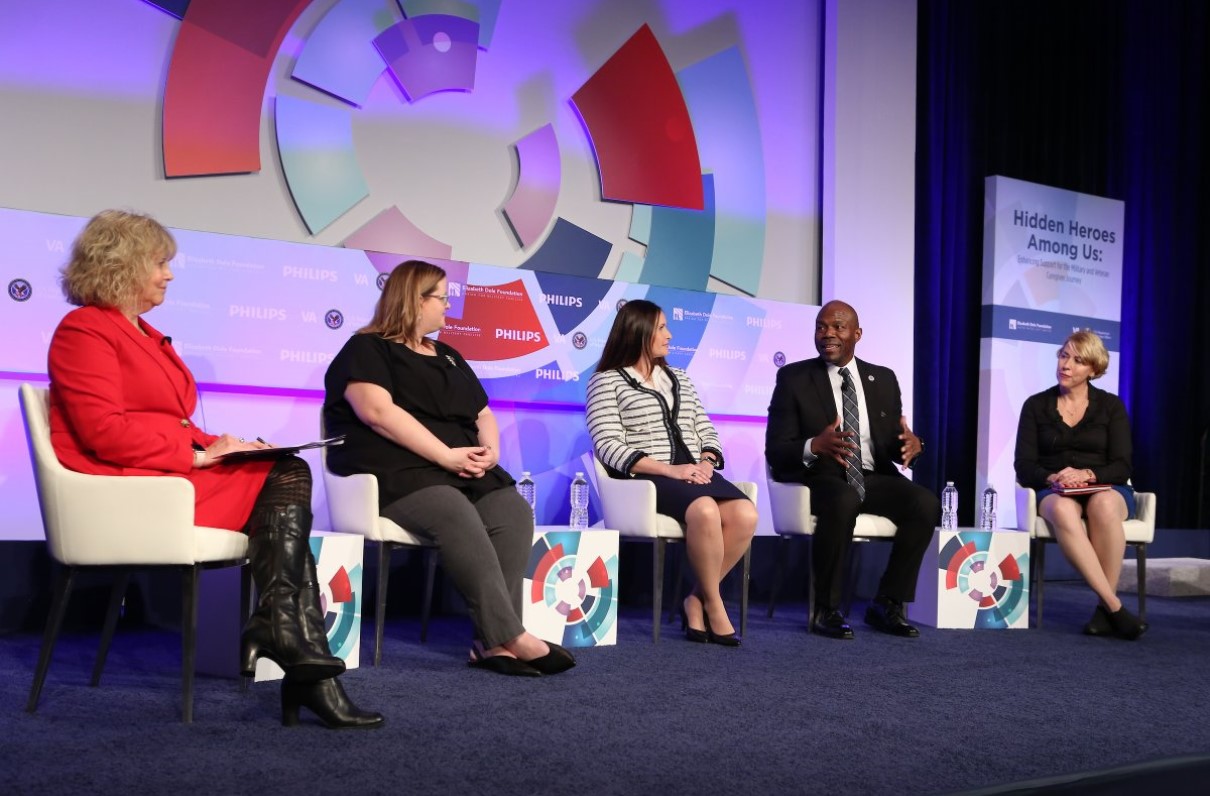This article by Amy Bushatz originally appeared on Military.com, the premier resource for the military and veteran community.
The creators of a new online tool are hoping a road map to the military caregiver experience can help users better navigate the challenges of assisting a wounded veteran, while giving advocates and nonprofits a better idea of how to help.
The Caregiver Journey Map, unveiled Nov. 26 at a Washington, D.C., event, was created by the Elizabeth Dole Foundation through its Hidden Heroes caregiver program, in partnership with the Department of Veterans Affairs and corporate sponsor Philips.
[RELATED: Tips for Lifelong Caregiving (a guide from MOAA and the Elizabeth Dole Foundation)]
Based off interviews and coordination with a wide array of experts and military caregivers, the map plots life experiences in a clock-like format. That life cycle is split into three main sections: becoming aware and adjusting, shifting priorities and seeking help, and finding a rhythm. Within each section are the landmark events a wounded veteran's caregiver often experiences, starting with the moment the injury occurs or is noticed.
Elizabeth Dole Foundation officials said they hope the map is used by two distinct groups of people: caregivers who need help, and the people who want to help them.
For advocates, the map can "teach providers, non-profits, anyone who is interested in learning more ... where there are points of intervention when their support can be most effective," said Laurel Rodewald, the foundation's director of programs, who helped developed the tool.
Rodewald said they originally got the idea for the map from a foundation partner who wanted to know how to help caregivers, but didn't know where to start.
"Despite the research that is going on in the space, people didn't have a perspective of the full context on the caregiver," she said.
The map, which is also available as a stand-alone print guide, can give those users a big picture overview.
But officials are also hoping it's equally useful to the caregivers themselves, giving them not only perspective that what they are currently going through is normal, but a view into how they may feel in the future, said foundation fellow Hannah Nieskens.
[RELATED: MOAA Continues Push for More Caregiver Support]
Nieskens, whose husband was injured in Iraq in 2005, said she hopes the map becomes a tool her community can use to know they are not alone in the feelings or struggles they face at home.
"Something like this would've been an awesome resource at that time because I really felt isolated. I felt confused. I felt overwhelmed," she said. "I felt very unsure of what I was doing, and it felt like I was doing this by myself. This tool, I think, could be so helpful for anyone who is going through the cycle of coming to grips with becoming a caregiver, and ultimately working toward balance in their life and thriving in that role."
The interactive map can be viewed here, while a print version can be found here.
Other articles by Military.com:
Hundreds Turn Out for Funeral of Vietnam Veteran with No Known Family
Report Blames F-22 Belly Skid on Human Error
Federal Judge Dismisses $100 Million Lawsuit over Parris Island Recruit Death
